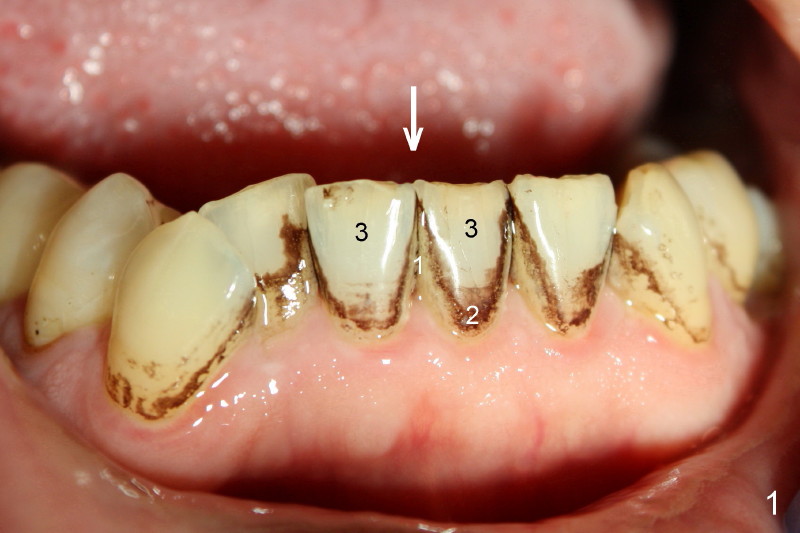
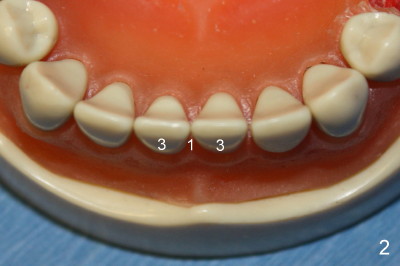
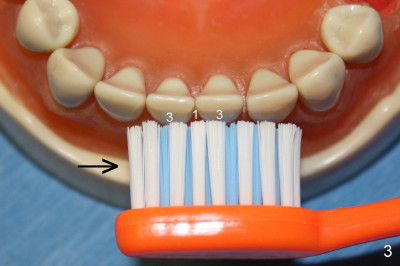

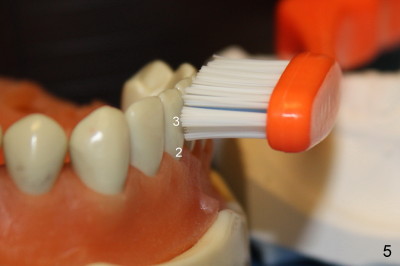
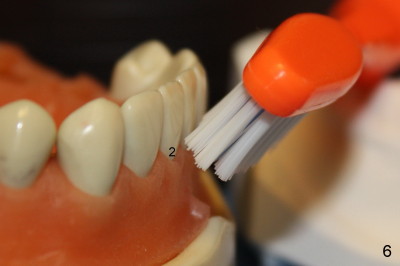
 |
 |
 |
 |
 |
 |
Stain and Brushing
Mr. Zhang cares about his teeth. He uses mouth rinse after every meal and brushes a lot. But his teeth are stained heavily (Fig.1), particularly between the teeth (1) and in the neck area of the teeth (near the gum line, 2). In contrast, the body of individual teeth is without much stain (3). Why? First of all, we need to study a little bit of tooth anatomy. Let us take a look of occlusal surface of the bottom front teeth, as shown by arrow in Fig.1.
Our teeth are rounded. The body of the tooth is convex (sticking out, Fig.2: 3), whereas the area between the neighboring teeth (1) is concave (hidden).
A regular toothbrush has intimate contact with the body of the tooth (Fig.3: 3). However, the area between the teeth (1) is not easily reached.
An electric toothbrush can be placed so that the side of bristles can reach the area between the teeth (Fig.4) so that stain is less likely to form there. Frequent and well-executed flossing is another way to prevent stain formation between the teeth.
How does the stain form in the area near the gum line (Fig.1: 2)? Like most people, Mr. Zhang probably brushes the body of the teeth (Fig.5: 2), leaving the other most important area (near the gum line: 2) untouched. We are looking at the side of the bottom front teeth (Fig.5), as directed by arrow in Fig.3.
The correct way to brush is to aim the toothbrush bristles at the gum line as shown in Fig.6. The neck of the tooth (2) needs to be brushed at the angle of 45 degree.
In fact, most of mouth rinses do more harm than good, such as heavy stain. Mouth rinse may be good for those people who cannot do mechanical cleaning themselves (brush and floss). Some people have stain-producing bacteria in their mouth. They need professional cleaning on regular basis. Mr. Zhang has not had cleaning for 1 year 9 months. Last, stain is easily deposited around crooked teeth. Mr. Zhang's teeth are not so straight (compare Fig.1,2). He should have had braces.
Xin Wei, DDS, PhD, MS 1st edition 11/27/2011, last revision 11/27/2011